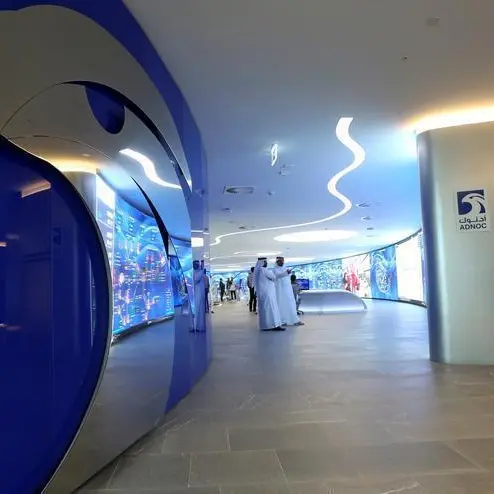AMMAN -- Stuck for years in a cycle of losses, Jordan Clothing Company (CJC) accumulated a big financial deficit that eroded more than 50 per cent of its JD4 million capital.
According to auditor Arab Professionals, a member of Grant Thornton, the accumulated losses reached JD2.3 million at the end of March 2015 following a JD300,000 loss during the first quarter of this year.
During the first three months of 2015, sales also were down by 40.3 per cent to JD300,000 from JD600,000 during the same period of last year.
Arab Professionals said the company should inform the Jordan Securities Commission and Amman Bourse about the extent and percentage of the losses and the reasons behind it, as required when accumulated losses of a company exceed 50 per cent of capital.
The review of the interim summary of the consolidated financial statements was qualified because the auditor was unable to quantify the JD800,000 worth of finished goods and goods under process through a physical verification of inventories.
The auditor also could not verify the balance of raw cloth and sewing materials worth JD700,000 and JD300,000 respectively because of mistakes in their quantities and prices.
Arab Professionals said CJC's management did not take necessary provisions to guard against JD400,000 of slow-moving goods.
The balance sheet as of March 31, 2015 showed total assets at JD4.2 million, JD2.5 million of which were goods, JD500,000 were property, machines and equipment, and around JD700,000 in receivables with a single client owing JD200,000 to CJC.
Short and long-term debt amounted to JD1.1 million, down from JD1.6 million at the end of last year, while accounts and notes payable totaled around JD1.1 million.
Net shareholders equity stood at JD1.9 million, down from JD2.2 million at the end of December 2014.
CJC's annual report covering the year 2014 indicated that sales last year dropped by 30 per cent to JD2.2 million, JD1.1 million of which were retail sales and JD700,000 were channeled through tenders.
Of the JD3.2 million of sales in 2013, JD1.4 million were retail and JD1 million were special orders, with exports and tenders each accounting for JD500,000.
Among several difficulties and challenges mentioned in the report was the weak purchasing power of consumers who, CJC noted, opted buying food and other basic necessities over clothes.
To counter lower demand, clothiers had to put forward discounts and special offers for long periods, at the expense of diminished profit margin, the report said.
It described wholesale activities as important but weak until now, pointing out that some traders took advantage of the company's trademark in the past and, as a result, CJC lost some customers.
Noting that the wholesale business is still unfavourable because it entails a high degree of risk, in terms of settling bills, the company added that it will consider a new approach to enter wholesale activities with competitive prices and new designs, while being vigilant against deceitfulness.
The company listed Algeria, United Arab Emirates and Saudi Arabia as export markets where it seeks to expand noting that CJC participated in an Algerian fair and will continue to join others in 2015.
Other markets eyed by CJC include Hebron and Nablus, in the Palestinian territories where the company has a branch in Ramallah, and Aqaba.
Sales in Aqaba, considered by CJC as an export outlet because of its free area status, declined last year by 30 per cent to JD51,594 and its retail shop in the city posted a JD19,210 loss.
Sales seemed worthwhile through government and military tenders, especially that a deal was clinched to supply the gendarmerie with special clothing over four successive years.
The gendarmerie will account for 31 per cent of the purchases from CJC as the company seeks profitable tenders without accompanying risks after countering some troubles in the past with certain government and military tenders.
Besides continuing to seek some tenders, the company will work on upgrading its clothing business for hotels, schools and hospitals and bringing in new designs that satisfy customers.
Reflecting lower demand, production dropped from 292,182 clothing pieces in 2013 to 221,658 pieces in 2014, the report indicated, mentioning Hong Kong Selection, Kerim Group, Union Garment and B.G.T Company as suppliers of more than 10 per cent of CJC's purchases.
The report listed several action plans to revitalise operations pointing in particular to production reorganisation at the factory with the assistance of highly qualified technical experts, and a marketing campaign, besides merging the subsidiary Central Clothing Company with the mother firm CJC.
"The reorganisation would include production lines, worker's productivity, and distribution of industrial costs in addition to replacing unprofitable production lines with what used to distinguish the authenticity of the company's products," the report said.
The marketing campaign would focus on underpinning the CJC trademark, opening a number of outlets in commercial centres to sell goods on commission basis, encouraging wholesale dealings once again, completing the establishment of three branches in Palestine, and expanding the marketing of new products such as men's underwear.
Moreover, the company plans to evoke past tradition and concentrate on shirts and trousers, its primary products, and to participate in local and international fairs in order to broaden its reach and enter new agencies.
Despite these remedial steps, a number of risks remain, such as higher production costs arising from the increase in the minimum wage to textile workers from JD170 to JD190 a month, and electricity charges.
Additional risks that "greatly affected" the company's sales were the high cost of living and labour strikes such as the one that took place at the Aqaba Container Terminal, CJC said.
It added that the company does not enjoy any government protection except the prime minister's decision which granted local manufacturers a 10 per cent preference over foreign industry for government purchases and tenders.
Another decisions that had a material effect on the company's performance, its products or competitiveness was the tax increase on imports from 5 per cent to 20 per cent.
CJC's labour force comprises 192 employees, 164 of whom work at the head office and factory in Al Tajamouat Industrial City located in Amman's Al Raqeem southern suburb. The remaining staff are employed at over a dozen retail shops in Amman, Zarqa and Aqaba.
The company, which estimates its capital investment at JD600,000, is owned by the retirement fund of the members of the Jordan Engineers Association (47.4 per cent), the social insurance fund of the members of the Jordan Engineers Association (1.9 per cent), and the solidarity fund at the Jordan Engineers Association (1.4 per cent) besides other investors.
© Jordan Times 2015











